Last April I traveled with my wife to France, my home country. As planned we went to meet my family at the Hôtel des Voyageurs which was recently acquired and revamped by my niece, Ariane and her boyfriend, Olivier. I highly recommend this charming little hotel. It is located in a little village of La Motte Chalancon, in a mountainous region called the Alpes. What I didn’t know is that vultures are back in France! I was quite surprised as I didn’t even know that they used to fly over this landscape long long ago. That story is in a small brochure which I scanned and you can see it at the second half of this post. I will give you a full translation because it is quite interesting.
Here the pictures. Although, according to the brochure there are 4 kinds of vultures right now in France, I only saw griffon vultures.
The little story behind this series of photographs
I had climbed up the mountain with my wife and my brother to get pictures of the vultures. Unfortunately, I was using my new Sony A1 camera and I had not yet mastered the settings for fast moving targets. In particular I had no idea how to set the continuous focusing feature. That is essential when you are trying to track a bird in flight. So, most of the pictures of that day were out of focus. I was really annoyed with myself because I hadn’t looked into this earlier. And then, the next day it was raining. Luckily, the weather was good enough the third day. This time nobody wanted to go with me, so I climbed up back to the good spot by myself and finally was able to take some good pictures.
However, when I returned to my car, I discovered to my dismay that I had lost my keys. Can you imagine?
I had to climb all the way back up and search for my keys. It took me an hour to get back up there and start searching. Meanwhile, my wife called me and started getting panicky when she heard I was looking for my keys in the wilderness. I wasn’t too worried because I was pretty sure that they must have fallen when I was climbing some rocky area which were a bit slippery. But we had a bit of a tight schedule, and here I was, stuck without a car, sigh…
Well, I eventually found the keys and everything fell back into place. We were able to drive up to Lyon and get to our hotel on time. And we even ended up having a very nice dinner in a classy restaurant. Let me know if you want to know more about that.
This is the brochure I mentioned at the beginning of the post.
I translated the whole thing for you.
I know my French friends would love me to translate the whole site in French too… sigh… so many things to do, so little time!
Page 1:
Vultures fly over more than 2 million acres but the heart of the colony is located in the defiles of the Aygues between St May and Rémuzat. Numerous trails enable you to discover the vultures. For those who can’t walk, it is possible to observe them from the place of Rémuzat, where a telescope has been installed, free of charge. To learn more, participate in wilderness outings organized by the association “Vautours en Baronnies”, visit the “Maison des Vautours à Rémuzat: exhibition, films, shows of live action filming.
Organization website: www.vautoursenbaronnies.com
Page 2:
Griffon vulture
Gyps fulvus
Size: 3.3 feet
Wing span: 8.5 to 9 feet
Weight: 17.6 to 24.2 pounds
Life expectancy: up to 50 years (added info: this number is in captivity. In the wild it’s more likely to be only 25 years)
Rupestre (lives on rocky cliffs), sedentary
Reproduction starts at age 3-4 years. Only one egg.
This is one of the largest European bird of prey. They have long and wide wings, a short and square tail. The head and neck are covered with down, and they have a collar which serves as a bib. The egg is laid at the beginning of the year, brooding lasts 45 days. The chick takes its first flight when 4 months old. By then, he’s the adult size.
Monk Vulture
Aegypius monarchus
Size: 3.6 feet
Wing span: 8.5 to 9.7 feet
Weight: 15.4 to 22 pounds
Life expectancy: up to 50 years (added info: this number is in captivity. In the wild it’s more likely to be only 25 years)
Lives in trees, sedentary
Reproduction starts at age 3-4 years. Only one egg.
This is the largest bird of prey in Europe. Their wings are large and long. The feathers are black and solid, the apparent balding on their head is what gave them this name (added info: this bird is also known as the cinereous vulture, the black vulture, and the Eurasian black vulture)
The courtship display start in January at the same time as the building of the nest. The egg is incubated by both parents for 55 days. The chick will fly when 4 months old.
Page 3:
Egyptian vulture
Neophron percnopterus
Size: 1.8 to 2.1 feet
Wing span: 5 to 5.6 feet
Life expectancy: 25 years (added info: this number is in captivity. In the wild it’s more likely to be 10 to 15 years)
Rupestre (lives on rocky cliffs), migratory
Reproduction starts at age 3-4 years. 2 eggs.
This is the smallest of the European vultures. The feathers are black and white, the yellow-orange face is its characteristic feature. The eggs are laid at the end of March and incubated for 6 weeks. The chick or chicks stay in the nest for 80 days. Shortly after their first flight the young leave for the migration. They will not return to the nesting site until old enough to reproduce.
Bearded vulture
Gypaetus barbatus
size:
Wing span:
Life expectancy: 25 years (added info: other sources mention 45 years in captivity. In the wild it’s more likely to be 21 years)
Rupestre (lives on rocky cliffs), sendentary
Reproduction starts at age 6 to 7 years. 1 to 2 eggs.
This is one of the largest European vultures. One can distinguish them by their long diamond-shaped tail and its goatee. The feathers of the young is mostly brown. As they grow older the back becomes dark grey while the belly and the head are often orange due to bathing in iron rich springs. The head has a black band and the eyes are red circled. The eggs laid between December and February are incubated for 54 to 58 days. The young start flying at 4 months.
Page 4:
Disappearance and re-introduction
The vultures disappeared from the south of France more than a century ago mostly because of the use of poison to destroy bears and wolves. The forbidden disposal of dead animals in nature also contributed to their disappearance. In 1987 the association “Vautours en Barronies” launched a program of re-introduction of the griffon and monk vultures. Since then, we observed the spontaneous return of the Egyptian and the bearded vultures.
Vultures and cattle
“UBI PECORA, IBI VUTURES”, “where there is cattle, there are vultures”. This roman saying reminds us that vultures were always connected with cattle raising. The herds of cattle allow the enclosures of areas and increase biodiversity. The vultures search for food is made easier. They make the corpses disappear and fight against the propagation of diseases. The digestive track of vultures is a “cul de sac” for virus, bacteria and other germs. One can talk of complementarity between cattle and vultures.
Some well orchestrated meals
The different species of vultures on a corpse during a feast are complementary.
The griffon vulture, starts on the corpse through the natural orifices and eat meat and entrails. The monk vulture with its sharp beak feeds on the cartilage, tendons, and skins. The Egyptian vulture less demanding takes advantage of the remains. The bearded vulture puts an end to the feast by eating the bones. The quartering mission is efficient and ecological.
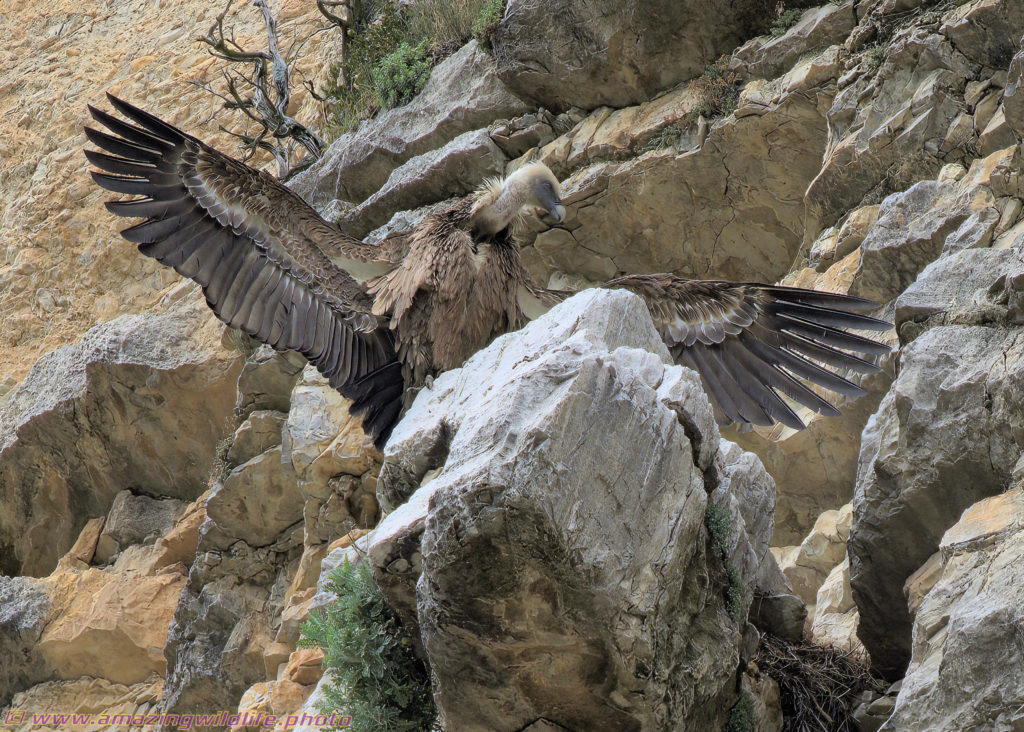


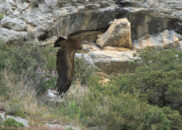
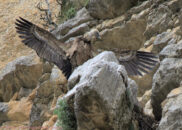
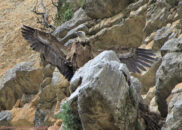
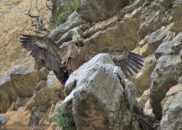
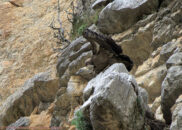
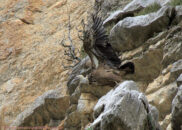
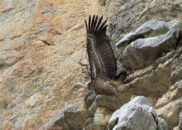
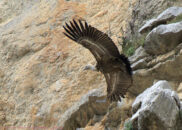
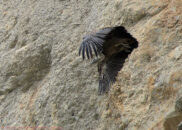
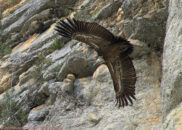




Wow! Never heard of vultures in France either! Great photos, climbing a mountain thrice? Yikes! ?
Thanks my friend. Yeah… it was tough, but I know what I want 😉
I like how the Vultures blended in with the rocks in the background. Nice click.
Awesome pictures Serge.
Thank you very much G.
I am happy to hear that you liked these.
Sorry for taking so long to create a new post.
But I will make sure to get one ready this weekend.